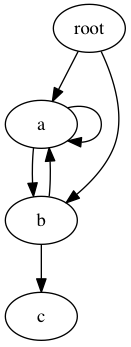pickle and cPickle
Table of Contents
The pickle module implements an algorithm for turning an arbitrary Python object into a series of bytes.
The cPickle module implements the same algorithm, in C instead of Python. It is many times faster than the Python implementation, but does not allow the user to subclass from Pickle.
Importing
try: import cPickle as pickle except: import pickle
Encoding and Decoding Data in strings
try: import cPickle as pickle except: import pickle import pprint data1 = [{'a':'A', 'b':2, 'c':3.0}] print 'BEFORE:' pprint.pprint(data1) data1_string = pickle.dumps(data1) print 'PICKLE:' print data1_string data2 = pickle.loads(data1_string) print 'AFTER:' pprint.pprint(data2)
output:
$ python ./pickle_unpickle.py
BEFORE:
[{'a': 'A', 'b': 2, 'c': 3.0}]
PICKLE:
(lp1
(dp2
S'a'
S'A'
sS'c'
F3
sS'b'
I2
sa.
AFTER:
[{'a': 'A', 'b': 2, 'c': 3.0}]
in files
try: import cPickle as pickle except: import pickle import pprint import sys data1 = [{'a':'A', 'b':2, 'c':3.0}] print 'BEFORE:' pprint.pprint(data1) try: filename = sys.argv[1] except IndexError: raise RuntimeError('Please specify a \ filename as an argument to %s' % sys.argv[0]) with open(filename, 'wb') as out_s: pickle.dump(data1, out_s) print 'AFTER:' with open(filename, 'rb') as in_s: while True: try: data2 = pickle.load(in_s) except EOFError: break else: pprint.pprint(data2)
$ python pickle_unpickle_in_files.py test.dat
BEFORE:
[{'a': 'A', 'b': 2, 'c': 3.0}]
AFTER:
[{'a': 'A', 'b': 2, 'c': 3.0}]
Circular References1
The pickle protocol automatically handles circular references between objects

import pickle class Node(object): """A simple digraph where each node knows about the other nodes it leads to. """ def __init__(self, name): self.name = name self.connections = [] return def add_edge(self, node): "Create an edge between this node and the other." self.connections.append(node) return def __iter__(self): return iter(self.connections) def preorder_traversal(root, seen=None, parent=None): """Generator function to yield the edges via a preorder traversal.""" if seen is None: seen = set() yield (parent, root) if root in seen: return seen.add(root) for node in root: for (parent, subnode) in preorder_traversal(node, seen, root): yield (parent, subnode) return def show_edges(root): "Print all of the edges in the graph." for parent, child in preorder_traversal(root): if not parent: continue print '%5s -> %2s (%s)' % (parent.name, child.name, id(child)) # Set up the nodes. root = Node('root') a = Node('a') b = Node('b') c = Node('c') # Add edges between them. root.add_edge(a) root.add_edge(b) a.add_edge(b) b.add_edge(a) b.add_edge(c) a.add_edge(a) print 'ORIGINAL GRAPH:' show_edges(root) # Pickle and unpickle the graph to create # a new set of nodes. dumped = pickle.dumps(root) reloaded = pickle.loads(dumped) print print 'RELOADED GRAPH:' show_edges(reloaded)
$ python pickle_cycle.py
ORIGINAL GRAPH:
root -> a (4299721744)
a -> b (4299721808)
b -> a (4299721744)
b -> c (4299721872)
a -> a (4299721744)
root -> b (4299721808)
RELOADED GRAPH:
root -> a (4299722000)
a -> b (4299722064)
b -> a (4299722000)
b -> c (4299722128)
a -> a (4299722000)
root -> b (4299722064)